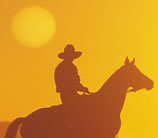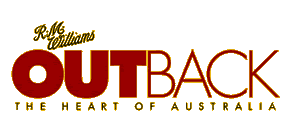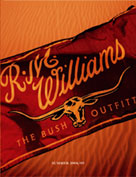OUTBACK STATIONS
Pilbara Pioneers
The station has changed significantly . . . it runs Shorthorn-Brahman cattle instead of Merino sheep and the size has increased five-fold to a million acres
Story: Trish Parker
Photos: Stephen Cockburn-Campbell
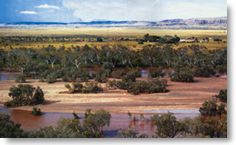 The
Pilbara is gentle and serene in a good Wet, with spinifex waving like wheat
on the flats and the heady smell of fresh country. For Lang Coppin of Yarrie
Station this rainy season is a relief, for the cattle are fat and sleek and
the pressure is off.
The
Pilbara is gentle and serene in a good Wet, with spinifex waving like wheat
on the flats and the heady smell of fresh country. For Lang Coppin of Yarrie
Station this rainy season is a relief, for the cattle are fat and sleek and
the pressure is off.
"When you mouth is full of dust and the cows are skinny, you wonder why you bother. But then you get a thunderstorm and there is water around and it makes it all worthwhile again," says Lang. "The Wet is a beauty, we don't have to bang around the 60 mills, keeping water up to the cattle."
Lang is a muscled. lithe man with a busy face and a dry turn of phrase. he is the fourth generation of Coppins to own Yarrie, as his grandfather established the station on a thin strip of land along the mighty De Grey River in 1886.
When Lang was a boy he used to scramble to the top of Mudrunja Hill to look out over the station. Now, nearly 50, he administers Yarrie from his helicopter and light plane and the station below has changed significantly.
It runs Shorthorn-Brahman cattle instead of Merino sheep, the size has increased five-fold to a million acres and the land has physically rejuvenated.
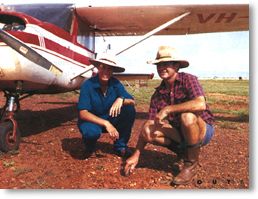 Lang
grew up on Yarrie and married the girl next door, Ann Edwards from neighbouring
Mount Edgar Station. Ann is an accomplished horsewoman, who learned many
of her stock skills from her father, Jim Edwards, on whom the book, A Town
Like Alice, was based.
Lang
grew up on Yarrie and married the girl next door, Ann Edwards from neighbouring
Mount Edgar Station. Ann is an accomplished horsewoman, who learned many
of her stock skills from her father, Jim Edwards, on whom the book, A Town
Like Alice, was based.
In their early years on Yarrie, Lang went kangaroo shooting, fencing, truck driving and pegging claims in the mineral boom to supplement the wool income from their 8000-10,000 sheep.
Things came to a crisis in the eastern Pilbara in the 1970s when the stations, over-run by dingoes and kangaroos and denuded by the grazing habits of the sheep, began to sell out of sheep or sell up.
"The dingoes made the final decision for us. They cleaned out most of the sheep. So Yarrie was one of the first to move out of sheep," Lang remembers.
"In 1973 we swapped the Land Rover for one bull and 23
cows from De Grey Station and three of the cows died on the truck." ![]()
Full story Issue 5, June-July, 1999
